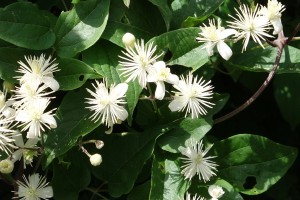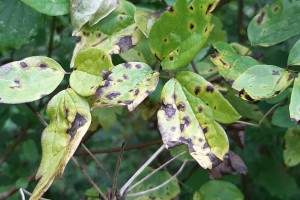Old man's beard leaf fungus
History in New Zealand
The strain of the old man’s beard leaf fungus that we attempted to use as a biocontrol agent in New Zealand was imported from the USA by the DSIR in 1990. The first field releases were made in the summer of 1996. Widespread releases began the following spring. Other, less virulent strains of the fungus, which cause mostly only cosmetic damage to old man’s beard, were already present in New Zealand. Only experienced plant pathologists are able to tell the strains apart using molecular techniques to compare their DNA.
A study using such techniques has not found any evidence that the strain that was deliberately released is still present in New Zealand, and it may have become extinct. Noticeable damage from the fungus was observed at many release sites early on. Now, only minor damage caused by the weaker strain is commonly seen later in the season.
At this time, no further attempt to establish the new strain of the fungus is being considered, as the reason for the failure may be due to the other fungal strains that old man's beard typically contains in its tissues. These endophytes may have been able to outcompete the introduced strain.
How would I find/recognise it and what is its lifecycle?
Patches of dead leaves or green leaves with black spots on them were typical of infection, as were spotted, wilted stems. The severity of the fungal infection depended on the amount of moisture available, and the greatest damage occurred after periods of wet weather.
How does it damage old man’s beard?
The old man’s beard leaf fungus initially causes black spotting on the leaves and stems, then premature leaf death and leaf fall. Younger leaves are more vulnerable than older leaves. Leaves that have been damaged by wind or insects also seem to be more susceptible to infection. Stems may be girdled by the fungal infection causing entire vines to die. Flowers, seed pods, and seedlings may also be destroyed by the fungus.

Image: blackening caused by old man's beard leaf fungus.

Image: damage caused by old man's beard leaf fungus.
Will it attack other plants?
The old man’s beard leaf fungus was expected to possibly cause slight damage to some of the ornamental Clematis species that are closely related to old man’s beard. No other plants were believed to be at risk.




